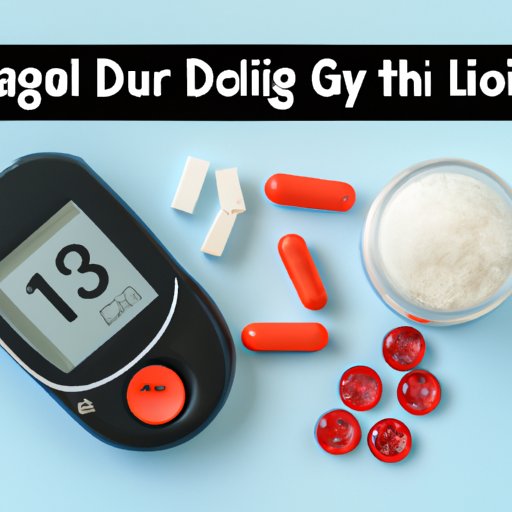
How to Raise Blood Sugar Fast: Tips for Managing Low Blood Sugar
Low blood sugar is a condition that affects many people, including those who have diabetes, athletes, and individuals who consume alcohol on an empty stomach. Symptoms can range from feeling shaky, sweaty, and lightheaded to confusion and seizures in severe cases. Managing low blood sugar is crucial to avoiding complications and feeling your best.
Sugary Drinks and Snacks for a Quick Fix
If your low blood sugar symptoms are severe and require immediate relief, sugary drinks and snacks are a quick and easy way to raise your blood sugar levels. Sodas, fruit juices, candy, and glucose gels are all examples of sugary options that can provide a fast fix. However, relying too much on these drinks and snacks can lead to undesirable health outcomes, such as weight gain, high blood pressure, and deteriorating heart health.
Sugary options can be helpful in emergencies, but it is best to consume them with moderation and balance. Select natural juices with no added sugar, wholesome fruits, and low-sugar snacks like raisins, pretzels, or bags of plain popcorn. We encourage you to check the nutrient label before eating anything!
Small Meal Options
If you prefer a more sustained blood sugar level, eating small and balanced meals is the way to go. A balanced meal should consist of suitable carbohydrates, proteins, and healthy fats that can keep your blood sugar stable for a prolonged period. Avoid processed foods or food combinations that have a high glycemic index index – this type of food can cause spikes and crashes in your blood sugar.
A good example of a balanced meal is a whole-grain piece of bread with almond butter and half a banana. Other good options include a hard-boiled egg with an apple or small turkey and cheese roll-ups. The point is to have a variety of nutrients and choose foods with a lower glycemic index.
Hydration
Staying hydrated is essential to regulating blood sugar levels. Dehydration can cause blood sugar levels to rise in the short term, but it can also mean that your body is struggling to dispose of excess glucose, leading to higher blood sugar and a thirst cycle. Dehydration can exacerbate low blood sugar symptoms, leave you feeling drained, and hinder your ability to concentrate. Make sure to drink enough water during the day, and you’ll see improvements in your health.
We recommend drinking at least 64 ounces of water a day, which translates into eight eight-ounce glasses of water. You can also incorporate hydrating foods into your diet, such as cucumbers, berries, and watermelon.
Exercise
Exercise may not be the first thing that comes to mind when you think of how to raise your blood sugar quickly. However, exercising is an efficient way to increase blood flow and help your body use glucose more effectively. Endurance exercises, strength training, and other activities that are gradually increasing your heart rate can be helpful.
You should plan your workouts strategically to optimize its blood-sugar-raising potential. Exercising after meals when your glucose is at its peak can be particularly helpful. Also, if you see that your blood sugar is low before a workout, it can lead to focus issues or dizziness – canceling the workout can be the best decision you can take that day.
Glucose Tablets and Gels
If your blood sugar continues to remain low, glucose tablets and gels are an option worth considering. Glucose is the primary energy source for your cells, so glucose tablets and gels work quickly to increase blood sugar as needed. These are an accessible and easy-to-use remedy for low blood sugar, and they come in handy when you’re on the go.
To use glucose tablets and gels, always follow the instructions, which will provide you insight on the dose that you should be giving yourself. Always have them with you wherever you go as low blood sugar sometimes surprises us when we don’t expect it.
Consult a Doctor
If you continue to experience recurring low blood sugar levels, it would be best to visit your healthcare provider. Low blood sugar could be a symptom of an underlying condition, including pancreatic or liver complications, so it is always best to rule out any medical concerns.
When speaking with your provider, make sure to elaborate on your symptoms, explain how you manage low blood sugar levels, and be sure to discuss your food routine and physical activity levels. Any information that you provide can help your provider create a personalized plan to help you manage low blood sugar symptoms.
Conclusion
Low blood sugar can be challenging, but there are many ways to manage it and get your glucose levels back on track. Sugary snacks and drinks, exercise, hydration, and balanced meals are all effective means of raising blood sugar. When in doubt, it is always good to consult a healthcare provider who can ensure that you have a plan to manage your symptoms. Remember to take care of your body and use these techniques with balance and care.





